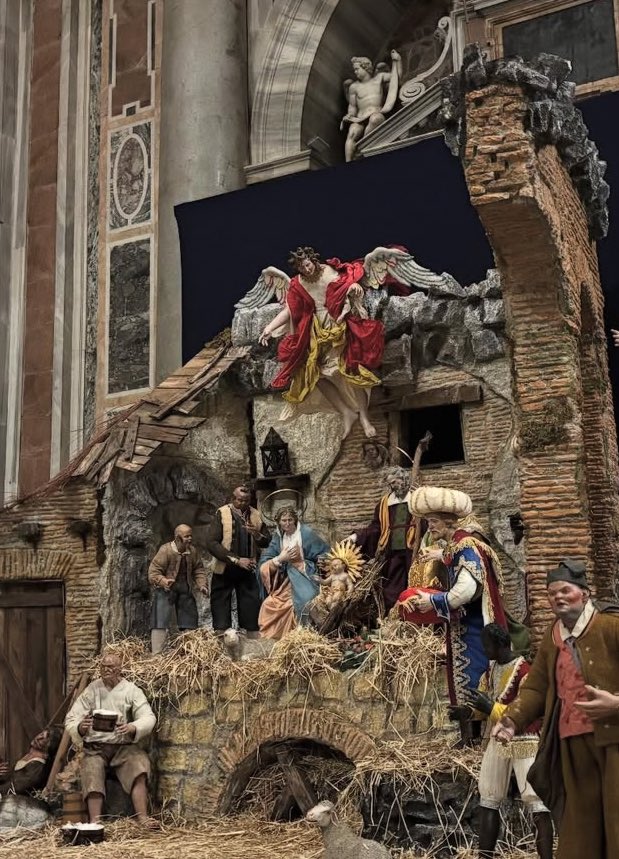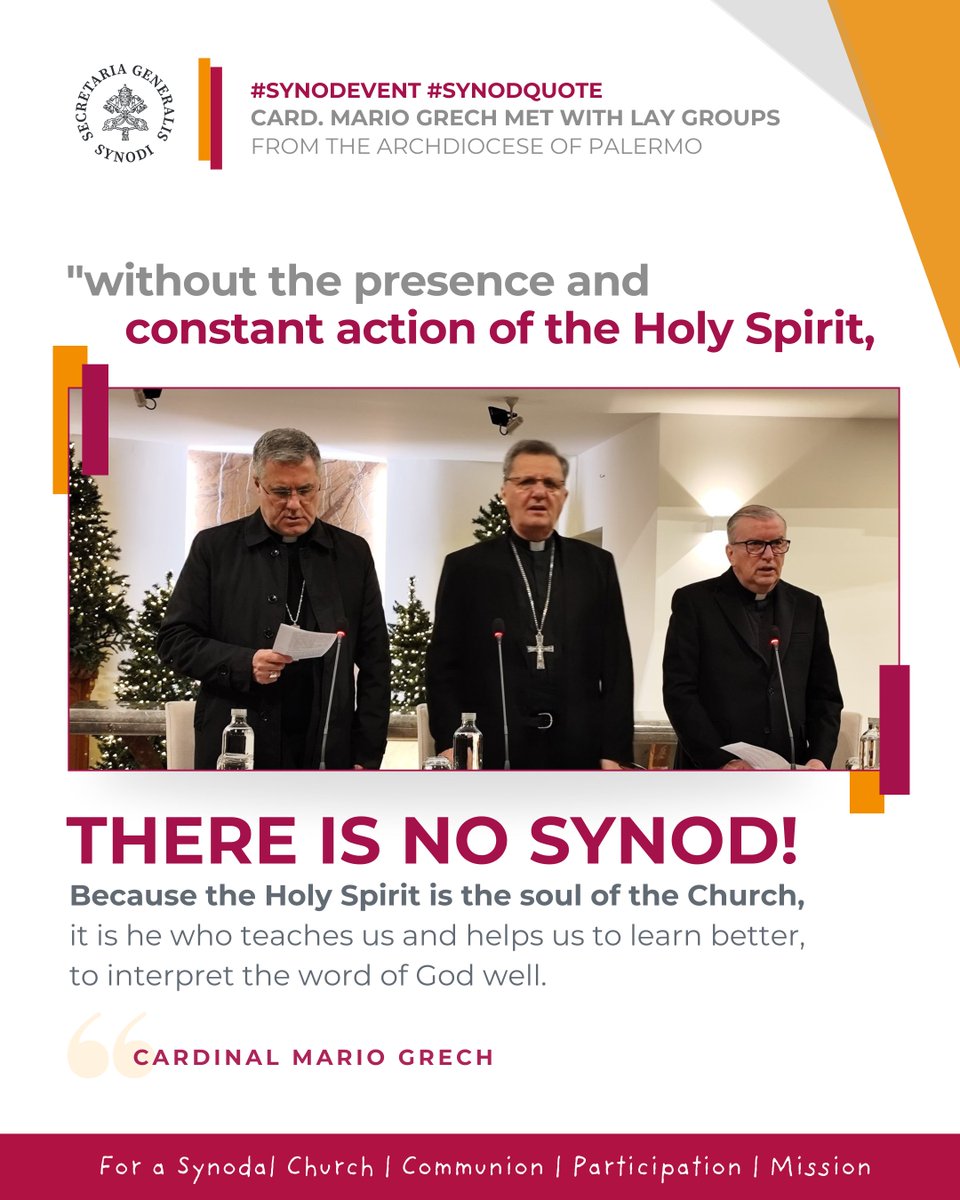Reality check for an emerging narrative…
Rumor Control: Was Ratzinger against the Interreligious Prayer Meetings in Assisi?
 (image: Abaca Press / Alamy Stock Photo)
(image: Abaca Press / Alamy Stock Photo)
‘Archbishop’ Georg Gänswein is back in the news.
His tell-all book Nothing but the Truth: My Life Beside Benedict XVI, the release of which reportedly made ‘Pope’ Francis furious, hit the shelves in Italy at the beginning of this year. At the time, it was not yet clear when or by whom it would be published in English. Benedict XVI, Joseph Ratzinger, had just died two weeks prior.
But now, on Oct. 23, 2023, St. Augustine’s Press released an English translation of the work under a revised, less sensationalist title: Who Believes Is Not Alone: My Life Beside Benedict XVI (commission-earning link).
On Oct. 24, the National Catholic Register published a review of the book, written by John Clark:
- A Beautiful Glimpse Into the Life of Pope Benedict (National Catholic Register)
One of the passages in Ganswein’s book the reviewer focuses on concerns the notorious interreligious prayer gathering in Assisi on Oct. 27, 1986. Here is a brief review of it:
In a news report on the event, Peter Hebblethwaite shared some of the non-Christians’ prayers:
…[T]here was plenty of public prayer. The Buddhists prayed:
May all animals be free from fear
Of being eaten by one another;
May the hungry ghosts be as happy
As the men of the northern continents.…The Shintoists quoted an imperial ode which earnestly wished “that the wind would soon puff away all the clouds which are hanging over the tops of the mountains”.
(“In Search of Peace”, The Tablet (Nov. 1, 1986), p. 1176)
That was in 1986, and pagans are as pagans do. Few would have imagined that 36 years later, they would see the ‘Pope’ himself participate in asking “the western grandmother to give us access to the sacred circle of spirits so they can be with us….” But Jorge Bergoglio is not our topic now.
Ratzinger under John Paul II
As Prefect of the Congregation for the Doctrine of the Faith, then-‘Cardinal’ Joseph Ratzinger served for over 23 years under ‘Pope’ John Paul II (r. 1978-2005). Although, as Ganswein relates, John Paul never made any major decision without first consulting with Ratzinger, the two were not always of the same mind. According to Ganswein, the ‘papal’ hosting of the first-ever World Day of Prayer for Peace, as the interreligious event was officially called, was an example of disagreement between the two:
As Archbishop Gänswein writes,
“Cardinal Ratzinger thought it inopportune for him to participate in the gathering. He thought that the unqualified gathering of such a vast range of cultic expressions represented by the sixty-two religious leaders assembled in the city of Saint Francis would cause serious confusion, and he feared his mere presence at the event would suggest that the pope saw no problem with it. Indeed, the program did include some ceremonies in local churches that were simply inappropriate, such as the placement of a statue of Buddha near the tabernacle and a peace pipe upon the altar. Moreover, during the midday prayer service in the main square outside of the lower basilica, the ordering of the prayers — even though there was a pause for silence between them — had an air of syncretism and the ring of relativism.” [page 28 in Kindle version of Who Believes Is Not Alone]
Pope John Paul II’s participation in this conference has been widely considered one of the most troubling events in his papacy, so it was edifying to me to discover that Cardinal Ratzinger objected to it.
(John Clark, “A Beautiful Glimpse Into the Life of Pope Benedict”, National Catholic Register, Oct. 24, 2023)
There has long been a rumor that Ratzinger objected to the 1986 Assisi gathering, and it is probably true. However, it would be a great mistake to think that this little anecdote confirms what some Benedict admirers have long wished to be true: namely, that their ‘Cardinal’ Ratzinger and later ‘Pope’ Benedict XVI was really an anti-Modernist at heart, one who secretly despised indifferentism and syncretism and therefore tried to oppose or at least downplay ecumenism and interreligious activities as much as he could, but his hands were often tied.
Before such a narrative takes off in a post-Benedict world, we had better nip it in the bud and set the record straight, for it is sheer nonsense. Ganswein in fact had more to say on the issue, not quoted by Clark, as we will see shortly.
Even if we grant, for the sake of argument, that Ratzinger really did oppose the first interfaith prayer meeting at Assisi in 1986, his opposition was practically worthless, for it changed nothing: (a) it did not manifest itself publicly, except perhaps in Ratzinger refraining from attending the event himself; (b) it did not prevent the gathering; (c) it did not condemn the gathering; (d) it did not counteract or mitigate any of the scandal or other harm caused by it. In short, as far as the public is concerned, Ratzinger might as well not have opposed it. Nothing would have been any different.
Since the ‘Spirit of Assisi’ unfortunately caught on, John Paul II happily repeated the abominable spectacle on Jan. 9, 1993 and on Jan. 24, 2002, in the very same place. If Ratzinger was still opposed, once again nobody noticed. There was no condemnation, no criticism, no resignation, nothing.
Some will probably argue that he did not want to make a public fuss about it since he owed obedience to the ‘Pope’ and did not want to create more scandal (but where does the true scandal lie?). Even that argument, however, falls apart rather quickly once we examine the known facts.
For one thing, the least he could have done in 2002 is refrain from attending, especially since he had not been on the official list of participants. However, he decided to join the motley prayer crew after all:
Cardinal Joseph Ratzinger, who had not been scheduled to attend (he ended up sitting in the front row), said the train pilgrimage [to Assisi] was a symbol that “we are travelling together and searching for peace together”. These were kind words from the Vatican official most adept at spotting the merest hint of doctrinal fuzziness in inter-religious relations.
(“Religious leaders of the world assemble in Assisi to beg for peace”, The Tablet [Feb. 2, 2002], p. 27; underlining added.)
Ganswein himself confirms this in the paragraph following the one quoted by Clark:
My conversations with Cardinal Ratzinger led me to believe that he had made his concerns clear to Pope Wojtyla about the Assisi event, but the latter was wholly convinced that the gathering presented an opportunity, so he asked the cardinal to help prepare for the event in whatever way he could. The cardinal was fully aware of his responsibility to caution the pope about the possible consequences, and he did not withdraw when John Paul II made it clear that he wished the event to go forward. In any case, according to Ratzinger, the pope realized that the cardinal’s reservations were not going away, and so he asked him to be involved in preparations for a reprisal of the event on 24 January 2002. Even though as late as the day before the event Ratzinger’s name was not included among the participants, he ultimately decided to contribute after the Holy Father’s gentle coaxing.
(Georg Gänswein with Saverio Gaeta, Who Believes Is Not Alone: My Life Beside Benedict XVI, trans. by Daniel B. Gallagher [South Bend, IN: St. Augustine’s Press, 2023], p. 28, Kindle version.)
But there’s more.
Ratzinger’s own Assisi as Benedict XVI
Fast forward to the year 2011. As ‘Pope Benedict XVI’, Ratzinger was now in charge of it all. He had all the authority and could do as he pleased, so to speak. He had the final say on everything. He no longer had to submit to any other prelate, for he was at the very top. When Oct. 27 came — the 25th anniversary of the original 1986 prayer meeting — what did ‘His Holiness’ do? Did he use the occasion to condemn this aberration? Did he at least refrain from commemorating the original event and disparage it with a conspicuous and deafening silence?
He did nothing of the sort, of course. On the contrary, he doubled down: As ‘Pope’, he held a repeat of the 1986 gathering, his very own edition of the World Day of Prayer for Peace, thus endorsing all of the prior Assisi meetings of his predecessor and ensuring that the apostate ‘Spirit of Assisi’ would be carried even further!
Remember?
In an address given to the delegations of the various religions the following day at the Vatican, Benedict XVI stated: “Looking back, we can appreciate the foresight of the late Pope John Paul II in convening the first Assisi meeting, and the continuing need for men and women of different religions to testify together that the journey of the spirit is always a journey of peace” (source).
Once again we find that, whatever he may have said behind closed doors back in 1986, everything he did and said in public points to his agreement of these ecumenical and interreligious Assisi prayer meetings; and nothing does more than his own, 25 years later.
In a later chapter in Who Believes Is Not Alone, Ratzinger’s sidekick also makes a few remarks about Assisi 2011:
A privileged moment in Benedict’s task of promoting interreligious dialogue occurred in Assisi in October of 2011, when he invited representatives of Christian churches, other religions, and notable agnostics, to send a clear message about the irrevocable commitment of all people of goodwill to promoting peace in the world, thus giving public witness to the inseverable bond between religion and peace and the complete rejection of violence. The occasion was the twenty-fifth anniversary of the World Day of Prayer for Peace, launched by John Paul II in 1986 to manifest religion’s role in the promotion of unity and peace and the rejection of division and conflict. Benedict ardently wished that by commemorating this occasion, the world might recapture the memory of that experience insofar as it “gives reason to hope for a future in which all believers [sic] will see themselves, and will actually be, agents of justice and peace.”
(Gänswein, Who Believes Is Not Alone, pp. 139, Kindle version; underlining added.)
Now, Ganswein is someone who would know. After all, he himself participated in Benedict XVI’s Assisi abomination:
Further helpful resources on the 2011 Assisi event include the following:
- Program released for Assisi Prayer Gathering 2011 (video)
- Pope travels to Assisi by train, with representatives from all major religions (video)
- Pope personally greets all participants during inter-religious gathering in Assisi (video)
- False god Olokun worshipped at Assisi Basilica
The (re-)emerging narrative of Ratzinger the secret opponent of the Assisi meetings is similar to the narrative of Ratzinger the secret friend of Fatima who tried to communicate, however cryptically, that there was still more to come concerning Our Lady’s triumph. It is a thesis that is not devoid of a certain superficial plausibility. However, upon close (and especially dispassionate) examination, it falls to pieces, as we have demonstrated before:
- Benedict XVI and the “Prophetic Mission of Fatima”: The Rest of the Story
- No Friend of Fatima: Unspinning Christopher Ferrara’s Defense of Benedict XVI
It seems that Ratzinger is somewhat of a magnet of false narratives, especially when we consider the whole ‘Benedict is still Pope’ saga that concluded only with his death on Dec. 31, 2022.
And we wonder whether it is only everybody else who is to blame for that.
Title image source: Alamy (Abaca Press)
License: rights-managed





No Comments
Be the first to start a conversation